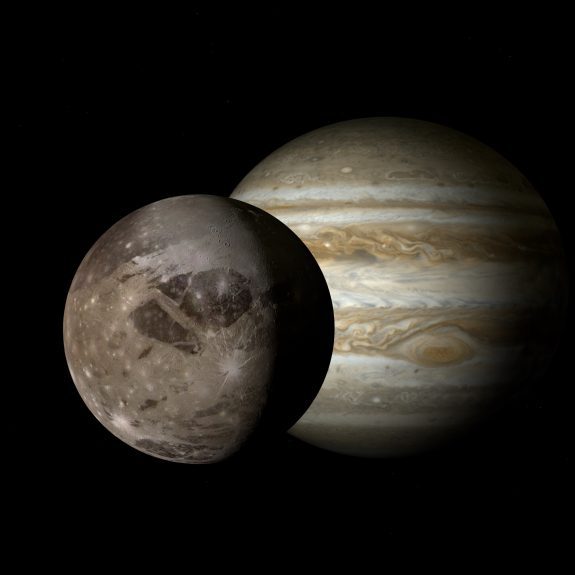
Sounds recorded from Ganymede, the biggest moon
Recommended for Preparatory Grades
Sounds recorded from Ganymede, the biggest moon in our solar system.
The Juno spacecraft recorded the sounds from the biggest moon of the solar system, that is Ganymede.
What is Juno?
Juno is a NASA spacecraft which orbits around the planet Jupiter. It was launched in 2011.
What is Ganymede?
Ganymede is a natural satellite of Jupiter (the moon of Jupiter). It is largest and enormous of all the moons of the solar system. It has a diameter of 5,268 kilometres.
The Juno spacecraft sent a flyby around Ganymede, the biggest moon of the solar system. The Waves instrument of the spacecraft recorded the sounds coming from the lunar surface of the Ganymede.
A ‘flyby’ is an operation in which a spacecraft passes closely through another planet or moon.
The Juno’s Waves instrument records the electric and magnetic radio waves that are produced in Jupiter’s sphere. Scientists have shifted these frequencies to make the audio track.
If you listen to the audio closely, you will feel the change in the frequencies around the midpoint of the recording. It represents the entry into a different region of Ganymede’s magnetosphere.
‘Magnetosphere’ is the region around a planet that is ruled by the planet’s magnetic field.
You can hear the sounds of the biggest moon here:
There are many more interesting news articles and information on space for all you kids. What are the other space missions? Which countries or private companies are working on space technology? What are the exciting new discoveries that scientists and astronauts are making? Or how about learning more about NASA, CNSA, ISS, ALMA etc.? We engage and educate kids through news, information and trivia. There are also a lot of exciting activities for children to engage in and express themselves. You can share your comments and views; participate in our regular quizzes and various creative challenges. Keep reading our space news for children to discover more about science and space. Keep your curiosity sky high!
Over 500,000 children are benefitting from Curious Times today! We continue to seek your valuable feedback to serve you better. Feel free to write to us at hello@curioustimes.in.You can also follow us on WhatsApp, Instagram, Facebook Youtube, Twitter, LinkedIn.
0 (Please login to give a Curious Clap to your friend.)

